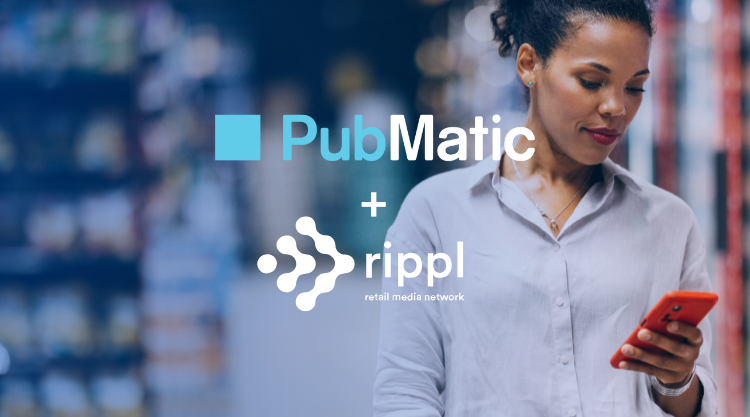Close your eyes. Imagine walking into a store, with your eyes still closed, and trying to buy something without being able to see anything – the salespeople, the products, the shelves and racks… nothing. That’s what it’s like for digital advertisers and agencies buying in some programmatic marketplaces. In the past, this was acceptable for advertisers, because although they were buying inventory blindly, they could buy at scale, measure their campaigns and still achieve a reasonable return on advertising spend.
In today’s programmatic world, however, private marketplaces (PMPs) are changing that experience, inviting advertisers to an exclusive publisher marketplace, where they can see what premium ad inventory is available and make decisions about which high-value placements they want to invest in. PMPs are the “luxury buying experience” that advertisers are increasingly demanding (take note of this, Robin Leach). For publishers, PMPs are a more controlled marketplace, where they can optimize on the types of advertisers and ads running on their sites, to achieve balance with the content experience.
As both advertisers and publishers recognize the value of PMPs, spending is increasing. eMarketer estimates that, in 2016, ad spending on PMPs in the U.S. will reach $3.65 billion (36% of all RTB display ad spending), up from just $80 million in 2013. That’s a 46x increase over three years.
When it comes down to it, though, it’s all about the advertiser, just like it’s all about the customer in a store. Let’s take a look at what’s most important when it comes to setting up a successful, luxury private marketplace for the digital ad buyer:
- Stocking the shelves with high-quality goods: Before shoppers show up, store employees need select products to sell. In the PMP world, this means publishers need to select high-quality inventory from their general pool to be sold. Often, this includes some of the highest-quality, direct-sold inventory to make the packages as attractive as possible. This quality assurance is critical to private marketplace success. The higher the quality of inventory, the more likely buyers will be attracted to these markets. Successful PMPs also stock the shelves with a broad range of premium inventory to meet buyer demand. High-end department store chains pride themselves in curating a wide selection of quality products to meet and exceed buyers’ expectations, and the best PMPs offer the same experience.
- Packaging the product: Any store manager knows that in order for a product to be sold, it has to be in the right packaging and displayed on the right shelf. (Ask anyone at Apple or Tiffany & Co. if packaging and in-store product placement are important to sales success.) In the PMP world, this means injecting demographic information, geographic targeting and any other first- or third-party data that the advertiser needs to effectively target a consumer. An attractive private marketplace should also have an easy-to-use interface with filters, searchable deals and informative graphics to make the buying process as seamless and pain-free as possible. E-commerce giants, like Amazon, are obsessed with user experience, and publishers need to think the same way. With PMPs, advertisers expect a neatly-packaged product, guaranteed at a preferred rate, all delivered at programmatic scale.
- The trip to the store: Shoppers have a vast number of options when it comes to choosing a store to shop at. In the digital advertising world, it’s no different. While there is certainly always budget for last-minute activity and spend, advertisers are looking to lock down inventory and plan budgets for the year ahead of schedule, especially when it comes to ad spend for their brand-building strategies. PMPs allow advertisers to plan ahead and choose the right store to get the product they want, with an exact description of what they’re getting. This inventory transparency is critical for agencies looking to provide detailed strategic plans to their advertiser clients. Advertisers, like most of us, don’t appreciate a bait and switch when it comes to their spending.
- Selecting a product to buy: In a high-end shopping experience, a store clerk can serve as an invaluable asset to a shopper looking for a particular product, cultivating an experience and guiding the customer to purchase with confidence. In a PMP deal, the publisher has to bring the advertiser the items (or inventory) they need and help them choose what they want. Publishers can connect directly with advertisers and offer inventory to a large number of them in a measured, controlled manner just as in a real-life shopping experience. Sometimes, these PMP deals are negotiated, while other times they are automated. What this leads to is an open and growing relationship between the two groups, and a relationship that can yield significant revenue gains for both parties. The best performing PMPs also allow advertisers to buy across a wide selection (i.e. hundreds of premium publishers) of PMP packages in the same way a shopper can buy multiple brands at a major department store. This is made possible through campaign tagging across ad inventory, another critical component of any successful private marketplace. In effect, PMPs allow for targeted, premium audience buying, at scale.
- Approaching the sales register: Once a purchase decision is made, that’s not the end of the customer experience. In the advertising world, just as important is the post-purchase add-ons and relationship building potential that comes out of a PMP deal. The “wrapping” that comes on the PMP gift box includes immediate billing, automation capabilities, measurement and tracking, among other benefits. These value-added services make transactions feel seamless and comfortable, two facets of a high-quality customer service experience. PMPs also enable a strong relationship between the buyer and seller, allowing advertisers to plan for budget allocations far in advance and buy directly from their preferred publisher’s for premium products when it’s right for their business and budget strategy.
In short, private marketplaces are changing the way that publishers and advertisers approach digital advertising, leading to bigger ad budgets, higher CPMs for publishers and a greater range of tailored premium audiences for advertisers. Media buyers are constantly looking for attractive inventory packages that are easy-to-buy, at scale, and PMPs offer the luxury digital ad buying experiences that cater to their long-term brand advertising needs.





